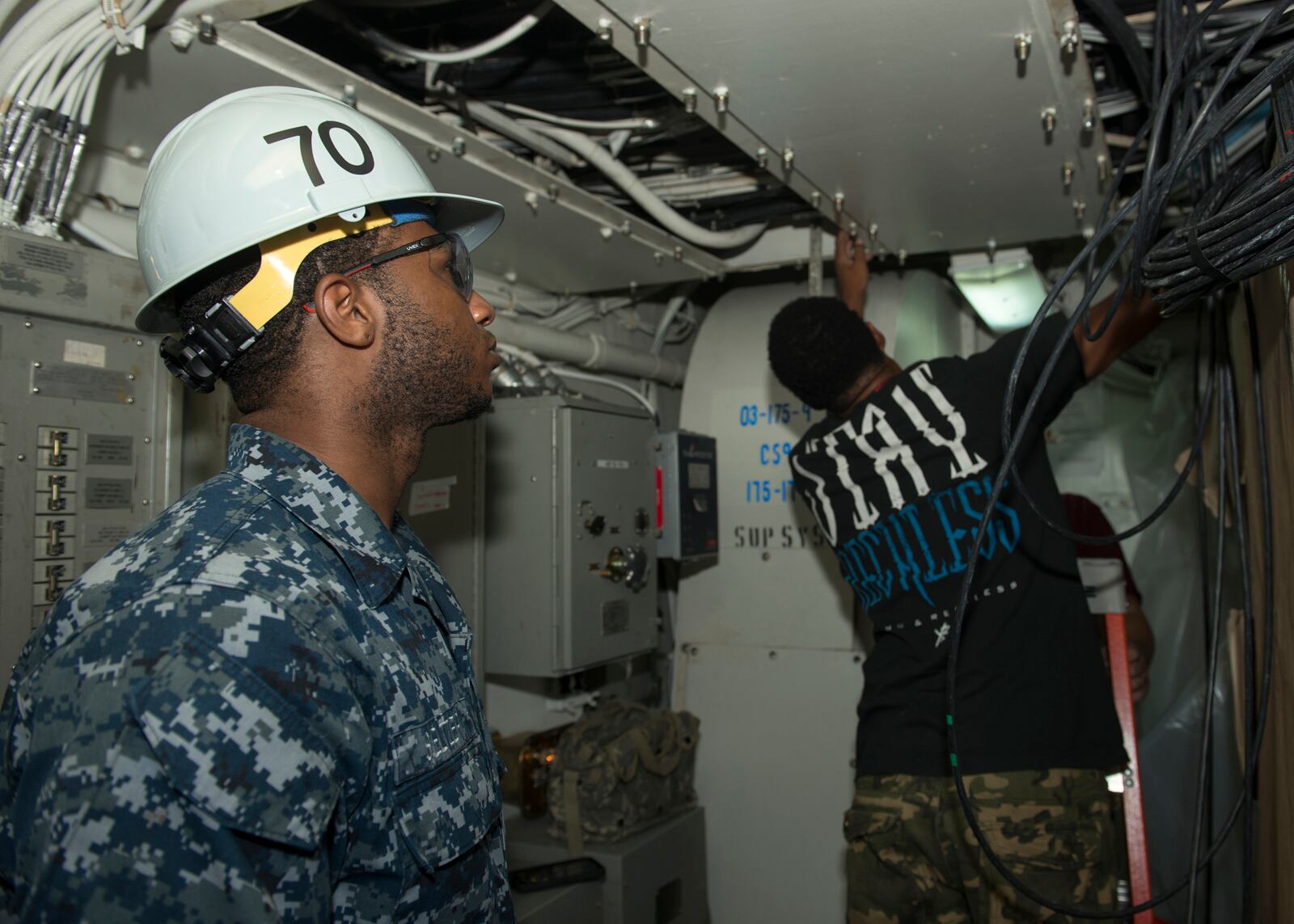The Navy is beginning a pilot program in the spring aimed at modernizing its afloat network architecture.
The “compile-to-combat in 24 hours” pilot aims to separate presentation, application and data layers, Rear Adm. Danelle Barrett, director of the Navy Cyber Security Division, said during a Feb. 8 presentation at the West 2018 conference in San Diego, California.
Barrett said the service wants to prevent the need to reach back to servers ashore to gain access to personnel databases or even sensor data that might be operationally relevant or critical for commanders. The vision, using a network architecture template that was created 17 years ago, is for a mini data cloud on that ship.
On a ship, she said, instead of having a specific monolithic application that just provides the navigation capability, an application logic could be self learning telling commanders what they need.
“It can use AI to help me to say this and this and this is happening, I’m going to present this to you because I think you need it in this context…Or here’s some functionality I need you to see,” she said.
Additionally, they want to be able to send ship data ashore to a big commercial cloud to tie into big data analytics.
“We are going to be disconnected…you have to say how can I make sure that commander has as much information at their finger tips even at that moment in time and how do I sustain him when he is in that environment so he can continue to operate,” she told C4ISRNET following her presentation.
“If you are building apps or… web pages and web portals that require everybody to reach back to your portal ashore, that’s not what we’re looking for in the future,” she said. “We need to think about that in the context of how you’re going to move forward with your applications and the capability that you deliver to the warfighters.”
Barrett told C4ISRNET they’re testing five applications this spring as part of the first phase of the pilot.
They’re also conducting the pilot on a DDG and an amphibious ship because they wanted a large deck and a small ship to conduct the test with existing architecture. They’ll wrap up the first phase and lessons learned by June with the next phase looking to broaden to more applications and testing on the secret network.
The pilot will focus on testing four specific aspects related to these applications: data standardization, the shared infrastructure, how to automate the testing to get it quickly fielded and how to use the commercial cloud.
“We could be totally wrong,” Barrett said about their vision for this architecture. However, “I suspect we’re not, because industry is kind of going this way with how their doing everything.”
If the architecture works, Barrett said the eventual goal is to make this the standard across the entire Navy. The afloat networks are the “the lowest common denominator because of bandwidth and disconnectedness,” she said, and so if it works there, there’s no reason it shouldn’t be the standard.
“We want to make sure this architecture is repeatable,” she said, “not a one trick pony.”
“I want to be able to test in the submarine environment, I want to test on LCS, I want to test on all those environments because they all need the same.”
Mark Pomerleau is a reporter for C4ISRNET, covering information warfare and cyberspace.







